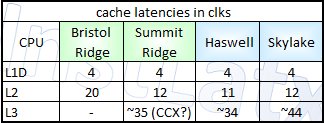Wasn't the argument awhile back something to the tune of "an (AMD) APU must be better than a lowly (750Ti?) dGPU for it to replace an i3/i5/i7 plus the said dGPU" so now the buyers of these i3/i5/i7 systems surf web using their OCed IGP?No, they won't. iGPU is a godsend for these types of systems because it's good enough to do what people want to do with them -- surf the web, play videos, play Facebook/Flash games, etc.
If you want to play real 3D games, then you buy a dGPU. That's pretty much the only reason to have one these days, unless you are trying to upgrade the media functionality of an ancient system (but most people don't upgrade systems, they buy new ones).
The SR7 is clearly targeted at the 5820/5830k buyers, 5960x if we're being generous. Anyone who wants/needs an IGP can always wait for the Zen APU, it's not like AMD's IGP will be less than anything the competition has, in fact Zen APU will have class leading graphics & you can quote me on that.
There's no cure for greed, envy, lust, gluttony, pride et al. you know the seven deadly sins. The world we live in is living proof of thatThe history of civilization is full of unsound decisions. Aside from buying something future proof (perf/platform features) it could be a mix of succesful salespeople, ego driven desires (e.g. bragging), single/two threaded browsers (Firefox w/ plugin container process not long ago), etc. No need to wrap a technical fact based discussion around it.







